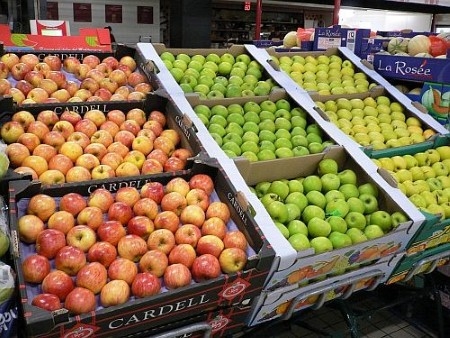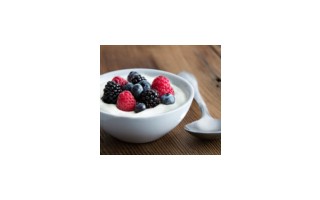 mmers, droughts or a big freeze – and the UK has suffered all of these extreme weather events in recent years – will have financial implications for the Fresh Produce Industry and the potential for increased food waste because of crop damage or loss.
mmers, droughts or a big freeze – and the UK has suffered all of these extreme weather events in recent years – will have financial implications for the Fresh Produce Industry and the potential for increased food waste because of crop damage or loss.No one can control the British climate, but corrugated packaging can help farmers and growers control costs and waste in the supply chain due to crops that have been affected by poor weather. Corrugated’s ability to adapt to all shapes and sizes, and its greater protective qualities offer improved saleability for fruit and vegetables.
There is a misconception that packaging contributes to food waste. A survey by WRAP revealed that 61% of people think fruit and veg goes off quicker in packaging, when in reality, items like cucumbers remain fresh for more than twice as long in their original packaging than when being stored naked, while salads stay fresh almost five times longer if kept packed.
The Fresh Produce Industry is combating waste within its supply chain – now at less than 10% according to WRAP - with measures that include optimising packaging and increasing re-use and recycling. Because of its superb environmental record, corrugated is the perfect packaging partner for fresh produce and can help it retain a low carbon footprint compared with other food sectors.
Over 80% of corrugated is recycled, while new boxes are made from recycled material. Where new fibre is used, it comes from sustainably managed forests. This commitment to responsible forest management has made a huge contribution to the increase in the size of Europe’s forests (up by 30% since 1950).
Corrugated is the most widely used form of packaging in the UK and has helped the Fresh Produce Industry deliver its goods to market safely for over a hundred years. It remains the safe and sustainable packaging solution that it has always been, but the UK Corrugated Packaging Industry is continually investing in new technologies to ensure it retains its top table place.
With a wide range of benefits, including an inherent flexibility, corrugated can be modified for different crops and misshapen produce, thereby reducing the potential for bruising and skin damage that can sometimes occur with rigid packaging.
Innovative technology is improving in-store performance as well through better print capability. High Quality Post Print (HQPP) has transformed corrugated packaging from protective transit packaging into multi-functional, colourful retail ready packs (RRP), without compromising product integrity.
Liners and coatings are also being developed for corrugated material to provide even greater food freshness. Liners can reduce fibres in the pack resulting in reduced input costs for growers, while coated substrates are helping in the battle against food waste by increasing the products’ in-store shelf life.
Transportation is also a major factor for fresh produce suppliers. With the advent of modern corrugated processes, such as new flutings that offer up to 23% storage space saving, the Corrugated Packaging Industry is offering more efficient logistics management through better use of pallets, resulting in fewer vehicles on the road.
In today’s challenging economic climate, supply chains continue to be scrutinised in an effort to drive down costs and meet environmental objectives. Corrugated can save fresh produce suppliers money by being manufactured to the optimum size suitable for transportation to shelf. Although the industry does work to standard footprints, the flexibility exists to introduce bespoke solutions quickly, efficiently and cost-effectively.
By contrast, other packaging options are not as space efficient as corrugated, and can require a high temperature regular wash regime to ensure hygiene standards are met, which involves extra fuel miles for transporting crates to the washing facilities, as well as the potential environmental cost of pollution through the discharging of cleaning agents.
Whichever packaging is used, hygiene is crucial. Because it is used only once prior to recycling and, due to the high temperatures applied during the manufacturing process, bacteria such as E-coli is unable to survive within corrugated, whereas there is the risk of contamination in other systems if thorough washing procedures are not adhered to.
CPI’s Director of Packaging Affairs, Andy Barnetson, said: “Corrugated provides safe food logistics and lower costs than alternative packaging systems because it is recyclable. Being single-use saves on administration and working capital.
“Corrugated will continue to evolve and adapt to the challenges ahead. There will be more pressure to reduce carbon footprint and the environmental impact of packaging. Corrugated, which is fully recyclable through a closed loop, is well placed to facilitate this.
“Print and digital technology will become increasingly important and the industry will also need to work on the growing impact of e-commerce. Items ordered online often travel great distances meaning every piece of packaging has to perform at its best in getting fruit and vegetables to the consumer’s door, direct from the retail outlet, without any damage.”
CPI Members understand all aspects of the supply chain and work with retailers, category managers, growers, importers, agents and packers to ensure the best solutions for all fresh produce companies, irrespective of size or location.
Packaging in the fresh produce sector is changing and producers must be ready to adapt quickly. Reduced pack weights and recycled materials are also becoming essential in helping producers respond to what the retailers want.
The Fresh Produce Industry wants packaging partners who can respond quickly with the equipment and support needed. The modern Corrugated Industry can do all this and more.
Fresh produce requires good quality, sustainable and stand-out packaging at the most cost-effective price, with quick turnaround and flexibility. All these are elements which the Corrugated Packaging Industry supplies in abundance - through hail, rain and sunshine.





